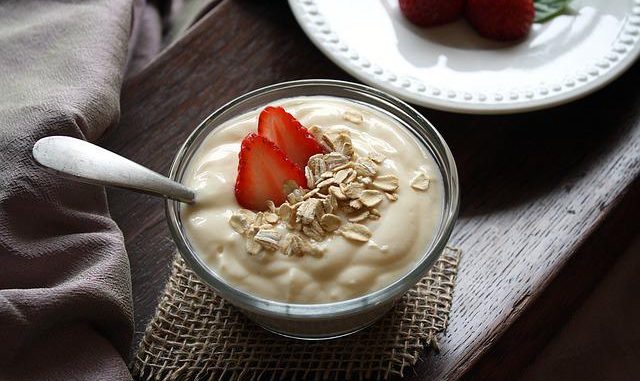
In 2020, the COVID crisis is raging throughout the world but the issues of other medical conditions including are still with us. In the world of product development, it is evident that dairy proteins drive medical nutrition onwards even in a world where plant proteins are starting to gain considerable traction.
We are all aging! The population of the world is reckoned to double from 8% to 16% by 2050 according a United Nations report from 2017. As an aging population we face many challenges especially in health. The big issues are increased levels of cancer and heart disease, the risk of diabetes and chronic kidney failure, and overall loss in bone structure and muscle mass leading to frailty. Nearly one in four hospital patients are malnourished and as a result they experience an increase in a stay in hospital by up to 75% (MNII, 2018).
Medical nutrition requires products of high value especially oral nutritional supplements. These particular products could reduce the cost of hospital case by 12% and improve a patient’s life quality by reducing the impact of malnutrition (MNII, 2018).
Because of population growth generally, it is thought the medical nutrition industry will grow from $51 billion in 2018 to $87.5 billion by 2025 (Global Market Insights, 2019). So you can see this is going to be a profitable market for anyone prepared to develop foods which meet medical nutrition requirements indeed.
What Forms Does Medical Nutrition Take?
Unlike food in general, medical nutrition products are ones that are fed under medical supervision. They help in the management of disease- or condition-related dietary needs. They are fed either through an oral route or intravenously.
Oral nutritional supplements (ONS) are preferred by many practitioners because they are seen as more like ordinary food and also less invasive. They should be easy to consume. A high quality ONS product should be able to deliver all the key nutrients but be pleasant to consumer or drink and provide a good consumer experience.
At the moment, the focus is on high protein and nutrient dense beverages which are taking more of the market. They are a source of nutrients in less volume than ordinary product formats. They help recovery and more specifically minimise muscle loss and its wastage from sarcopenia. High protein ONS drinks are the route being followed.
What Are The Issues In Formulating High Protein ONS Beverages?
One of the first challenges is actually formulating a nutrient dense beverage (ONS). A typical nutrient dense food per 100ml would most likely contain 240 kcal of energy with a composition of 14.4% protein, 9.4% fat and 24.4% carbohydrates, and all dissolved in water. This type of food per 100ml is equivalent to a 46g slab of meat providing that level of protein with 24.4g of sugar and 9.4g of oil. That makes 80g in total for a start.
It is nigh impossible to fit roughly 80g of such a product into 100ml of beverage – the viscosity would be extraordinary for a start because there is not enough remaining volume for liquid as well as other ingredients. It is also the case that a specific range of nutrients need to be chosen to comply with the requirements of medical nutrition.
To achieve any think like the amounts needed requires high purity proteins from dairy and plant protein concentrates and isolates which brings with it other nutrients such as vitamins and minerals. Levels of calcium, magnesium, potassium, sodium and other nutrients need to meet particular levels. Every country has its own particular regulations for medical foods and some mineral contents especially with sodium can be exceeded. It also means that extra and possibly unwanted complexity is added to the formulation if different proteins are used because they all vary in their composition.
The remaining challenge is interactions between ingredients and any process interactions. There are issues to be dealt with in dissolving ingredients, probably in emulsification, standardization, sterilization and then filling. If a formulation has over 30 ingredients, one or more will be affected by pH and levels of heating.
From a nutritional perspective, dairy foods generally have higher amounts of PDCAAs (Protein Digestibility Corrected Amino Acid Score) and DIAAS (Digestible Indispensable Amino Acid Score) compared to their plant equivalents (Chalupa-Krebzdak et al., 2018). To the annoyance of many formulators of vegan ONS beverages, they have not yet been able to find a plant protein food that supersedes the dairy equivalent. Why protein isolates, milk protein concentrates etc. all appear to have strong claims as nutrient dense proteins. The same study also showed that dairy proteins are more easily digested compared to their plant alternatives, especially whey when compared to say pea protein isolate. Likewise, blood profiles of key amino- acids such as leucine show it is more readily available in plasma during protein digestion when whey is ingested compared to say soy (He et al., 2013).
References
Chalupa-Krebzdak, et al., (2018) Nutrient density and nutritional value of milk and plant-based milk alternatives. Int. Dairy J. 87 pp. 84-92
Global Market Insights, (2019) Clinical Nutrition Market Size by Product, Parental Nutrition, Enteral Nutrition…….accessed 11th May 2019.
He, T., Spelbrink, REJ., Witteman, B.J. Giuseppin, MLF (2013) Int. J Food Sci., 64(7) pp. 787-793
MNII (2018) Medical Nutrition International Industry. web-site articles accessed 10th May 2019



Leave a Reply